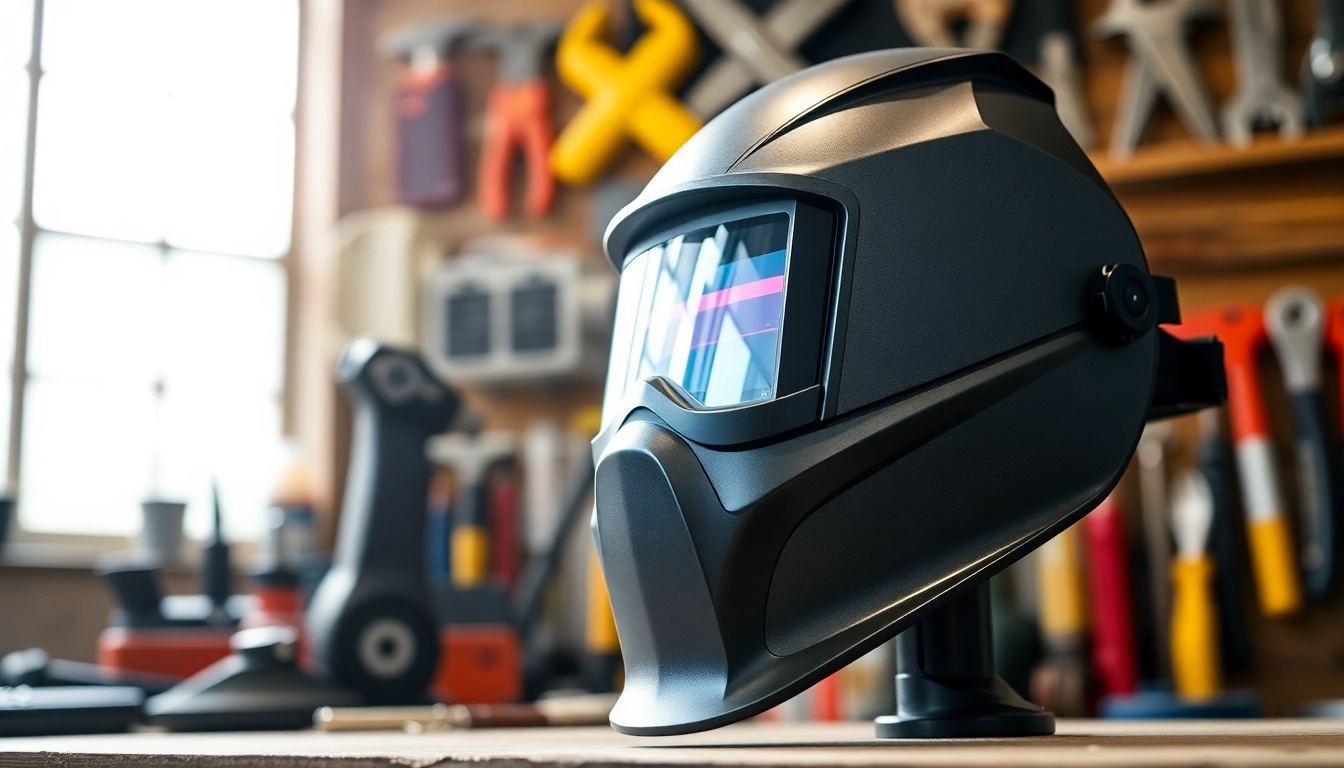Understanding Welding Masks
Welding is a vital process in many industries, from construction to metal fabrication. One of the most essential pieces of equipment for any welder is the welding mask. A welding mask, also known as a welding helmet, offers critical protection for the face, eyes, and neck from bright light, intense heat, and flying debris. This article will take a closer look at the different types of welding masks, their essential features, safety standards, and maintenance tips to ensure optimal safety and performance.
What is a Welding Mask?
A welding mask is a protective headgear specifically designed to safeguard the welder from the bright light and heat generated during welding processes. It protects the facial areas, particularly the eyes, which are susceptible to damage from UV radiation and intense light. Depending on the type, welding masks can come with different features such as auto-darkening lenses, which adjust to the brightness of the welding arc, providing enhanced visibility and protection simultaneously.
Types of Welding Masks Available
Welding masks come in various designs catering to different types of welding processes and user preferences. The most common types include:
- Auto-Darkening Welding Masks: These masks feature lenses that automatically darken to protect the eyes from harmful rays while allowing for visibility before and after welding. They are essential for processes like TIG, MIG, and stick welding.
- Passive Welding Masks: These types have a fixed dark lens and require the welder to tilt their head down to shield their eyes during the welding process. They are typically less expensive than auto-darkening masks but offer less convenience.
- Flip-Front Welding Masks: These are designed with a flip-down front that allows welders to easily switch between protected and unprotected states without removing the helmet.
- Pancake Welding Hoods: Lightweight and low-profile, these hoods are favored by welders for their comfort and minimal obstruction while still offering protection.
Key Features to Consider When Buying a Welding Mask
When selecting a welding mask, several key features should influence your decision:
- Lens Shade: Ensure the lens shade matches the intensity of the welding process you will undertake to protect your eyes adequately.
- Comfort and Fit: A well-fitting mask will enhance your ability to work efficiently. Look for adjustable headgear for a snug fit.
- Weight: Heavier masks can lead to fatigue over prolonged use. Lightweight models may offer more comfort during extended work periods.
- Viewing Area: A larger viewing area allows for better visibility while working, helping to improve precision.
- Respiratory Protection: Consider masks that offer integrated respiratory protection or compatibility with respirators for added safety.
Safety Standards and Regulations
Adherence to safety regulations is crucial in protecting welders from hazardous exposure during their work. Understanding safety standards helps in selecting masks that provide adequate protection.
Importance of Compliance in Welding Masks
Compliance with safety standards ensures that welding masks effectively protect the wearer from hazards present during welding processes. These standards are designed to mitigate the risks that come with the bright light, heat, and potential injuries caused by flying particles.
Common Certifications for Welding Masks
Welding masks may carry several certifications that validate their compliance with safety standards:
- ANSI Z87.1: This certification signifies that the welding helmet meets high standards for impact protection.
- ISO 9001: Indicates that the helmet adheres to international quality management standards.
- BS EN 175: This European standard covers protective equipment for welding and allied processes, ensuring a safe work environment.
Regional Safety Standards to Be Aware Of
Depending on your geographical location, different regulations may apply. For those in the United States, the Occupational Safety and Health Administration (OSHA) has specific guidelines addressing the types of protective gear that welders must use. It’s essential to familiarize oneself with these regulations to ensure compliance and safety in your workplace.
Choosing the Right Welding Mask for Your Needs
Choosing the right welding mask plays a significant role in your safety and comfort while working. Here’s how you can make an informed decision based on your experience level, type of work, and budget.
Evaluating the Best Welding Mask for Beginners
Beginners should consider starting with a mask that is easy to use and provides flexibility. Auto-darkening masks are typically recommended for new welders, as they allow for easy transition between tasks without constantly adjusting the lens. They also come with preset shade settings that cater to various welding types, making them ideal for novices.
Professional vs. Hobbyist Welding Masks
For professionals engaged in heavy-duty welding operations, investing in high-end auto-darkening masks with prolonged battery life and advanced features is crucial. These masks tend to offer superior comfort, better visibility, and enhanced safety features. Hobbyists may prefer more affordable options that still meet essential safety standards while providing the necessary protection for occasional use.
Budget Considerations for Welding Masks
Welding masks come in various price ranges, and setting a budget can help narrow down your options. While cheaper masks might save money upfront, it’s essential to consider the long-term benefits of investing in a quality mask that ensures better safety and durability.
Welding Mask Maintenance and Care
Proper maintenance of welding masks is necessary to extend their lifespan and maintain protective qualities. Neglected masks can pose serious risks to your safety.
Cleaning Your Welding Mask Effectively
Regular cleaning of your welding mask can help maintain visibility and prevent scratches on the lens. Here’s how:
- Use a soft microfiber cloth to wipe the lens and body of the mask gently.
- For stubborn spots, use a mild detergent mixed with water. Avoid using alcohol-based cleaners that can deteriorate the lens.
- Always ensure the mask is completely dry before storing it.
Storage Tips to Extend the Lifespan of Your Welding Mask
Proper storage plays a protective role in maintaining the integrity of your mask. Consider the following tips:
- Store your mask in a cool, dry place away from direct sunlight and extreme temperatures.
- Use a protective case or bag to shield it from dust and potential damage when not in use.
- Regularly check the condition of the straps and lens for any wear and tear that may require repair or replacement.
Common Repairs for Welding Masks
Knowing how to perform basic repairs can greatly enhance the longevity of your welding mask. Common repairs include:
- Replacing worn headgear straps that can affect the fit and comfort of the mask.
- Swapping out scratched or damaged lenses, which can lead to reduced visibility and safety hazards.
- Repairing or replacing batteries in auto-darkening masks to maintain functionality.
Frequently Asked Questions About Welding Masks
What Should I Look for in a Welding Mask?
When choosing a welding mask, consider factors such as lens type (auto-darkening or fixed), comfort and fit, weight, viewing area, and any additional features that may improve safety and functionality.
How Do Auto-Darkening Welding Masks Work?
Auto-darkening welding masks utilize sensors that detect the intense brightness of the welding arc. They automatically adjust the lens shade to protect the eyes while allowing for improved visibility before and after welding.
Are There Specific Welding Masks for Different Types of Welding?
Yes, certain welding masks are designed specifically for different welding processes such as MIG, TIG, or stick welding. Each type may feature unique settings and functionalities to cater to the specific demands of the welding task at hand.



